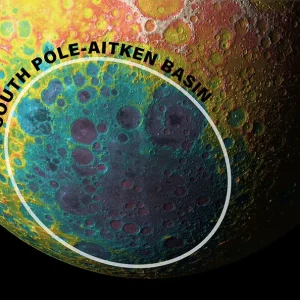Survey of planet-forming disks
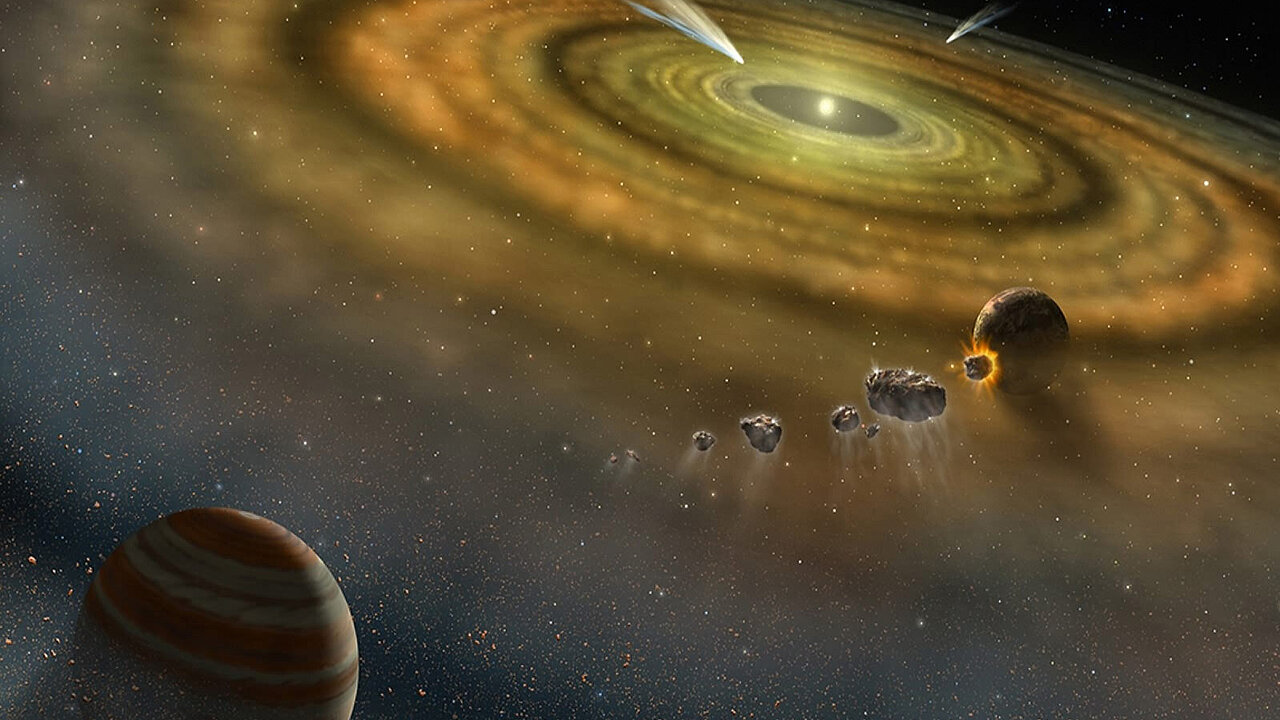
The European Southern Observatory said on March 5 that its Very Large Telescope (ESO’s VLT) in Chile has captured images of planet-forming disks, in one of the largest-ever surveys of these disks. The research focused on observations of more than 80 young stars believed to have planets forming around them. The new observations have given astronomers new data and unique insights into how planets might arise in different regions of our home galaxy, the Milky Way.

Christian Ginski of the University of Galway, Ireland, is a lead author of one of three new papers published on March 5, 2024, in Astronomy & Astrophysics. Ginski said:
This is really a shift in our field of study. We’ve gone from the intense study of individual star systems to this huge overview of entire star-forming regions.
EarthSky lunar calendars are back in stock! And we’re guaranteed to sell out, so get one while you can. Your support means the world to us and allows us to keep going. Purchase here.
Planet formation is varied

To date, astronomers have found more than 5,000 planets orbiting stars other than our sun. And often they’re within systems markedly different from our own solar system. To understand where and how this diversity arises, astronomers must observe the dust- and gas-rich disks that envelop young stars. These are the very cradles of planet formation. And they’re best found in huge gas clouds where the stars themselves are forming.
Much like mature planetary systems, the new images showcase the extraordinary diversity of planet-forming disks. Ginski said:
Some of these disks show huge spiral arms, presumably driven by the intricate ballet of orbiting planets.
Antonio Garufi of the Arcetri Astrophysical Observatory, Italian National Institute for Astrophysics (INAF), and lead author of one of the papers, added:
Others show rings and large cavities carved out by forming planets, while yet others seem smooth and almost dormant among all this bustle of activity.
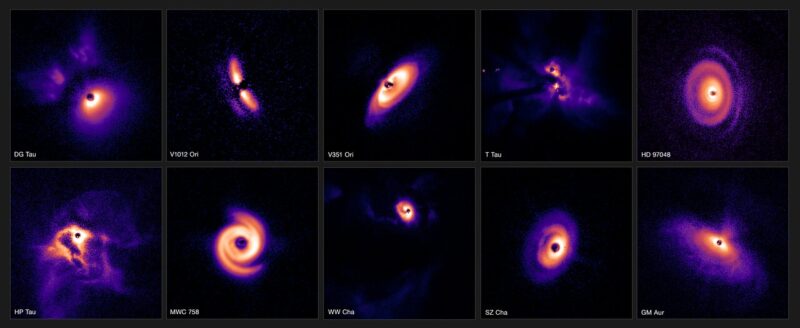
Focusing on 3 gas clouds and their planet-forming disks
The team studied a total of 86 stars across three different star-forming regions of our galaxy. The first two regions are Taurus and Chamaeleon I. Both lie around 600 light-years from Earth. The third is Orion, a gas-rich cloud about 1,600 light-years from us. Scientists already knew it as the birthplace of several stars more massive than the sun. The observations were gathered by a large international team, comprising scientists from more than 10 countries.

The team gleaned several key insights from the data. For example, in Orion they found stars in groups of two or more were less likely to have large planet-forming disks. This is a significant result because most stars in our galaxy have companions. In addition, the uneven appearance of the disks suggests the possibility of massive planets embedded within. This could be what’s causing the disks to warp and become misaligned.
While planet-forming disks can extend for distances hundreds of times greater than the distance between Earth and the sun, their location several hundreds of light-years from us makes them appear as tiny pinpricks in the night sky. So the team used the Spectro-Polarimetric High-contrast Exoplanet Research instrument (SPHERE) mounted on ESO’s VLT. SPHERE’s state-of-the-art extreme adaptive optics system corrects for the Earth’s turbulent atmosphere, yielding crisp images of the disks.
Thus, the team was able to image disks around stars with masses as low as half the mass of the sun. That size is typically too faint for most other instruments available today. Additional data for the survey were obtained using the VLT’s X-shooter instrument. The X-shooter allowed astronomers to determine how young and how massive the stars are. And the Atacama Large Millimeter/submillimeter Array (ALMA) helped the team understand more about the amount of dust surrounding some of the stars.
Images of the 3 gas clouds
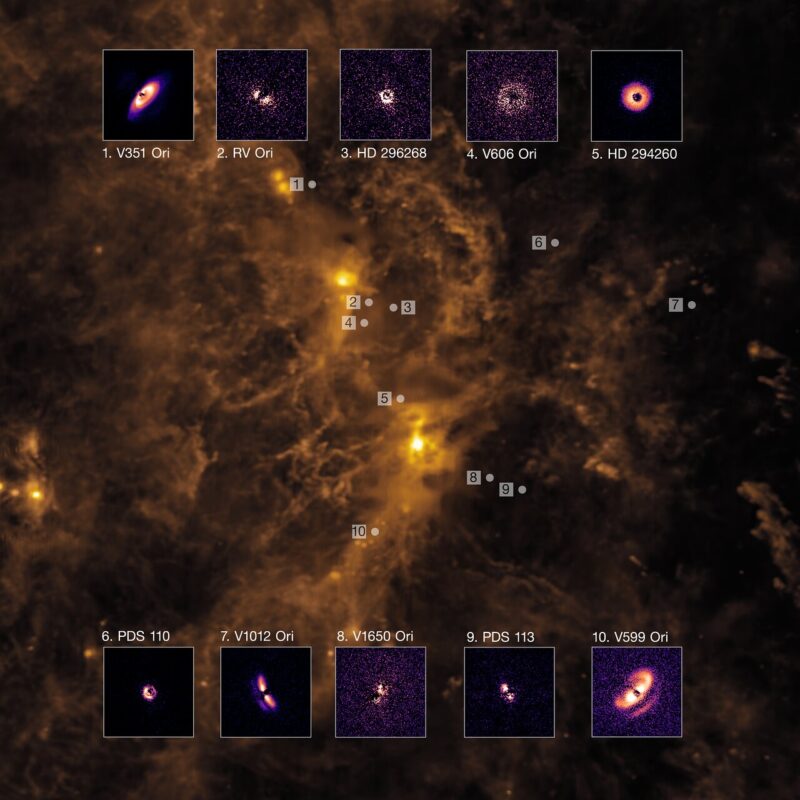
Deeper images to come
As technology advances, the team hopes to delve even deeper into the heart of planet-forming systems. The large 39-meter mirror of ESO’s forthcoming Extremely Large Telescope (ELT), for example, will enable the team to study the innermost regions around young stars. These are areas where rocky planets like our own might be forming.

For now, these spectacular images provide researchers with a treasure trove of data to help unpick the mysteries of planet formation. Per-Gunnar Valegård, of the University of Amsterdam, the Netherlands, led the Orion study. Valegård hopes the images will inspire his pupils to become scientists in the future and said:
It is almost poetic that the processes that mark the start of the journey towards forming planets and ultimately life in our own solar system should be so beautiful.
Focusing on one of the disks
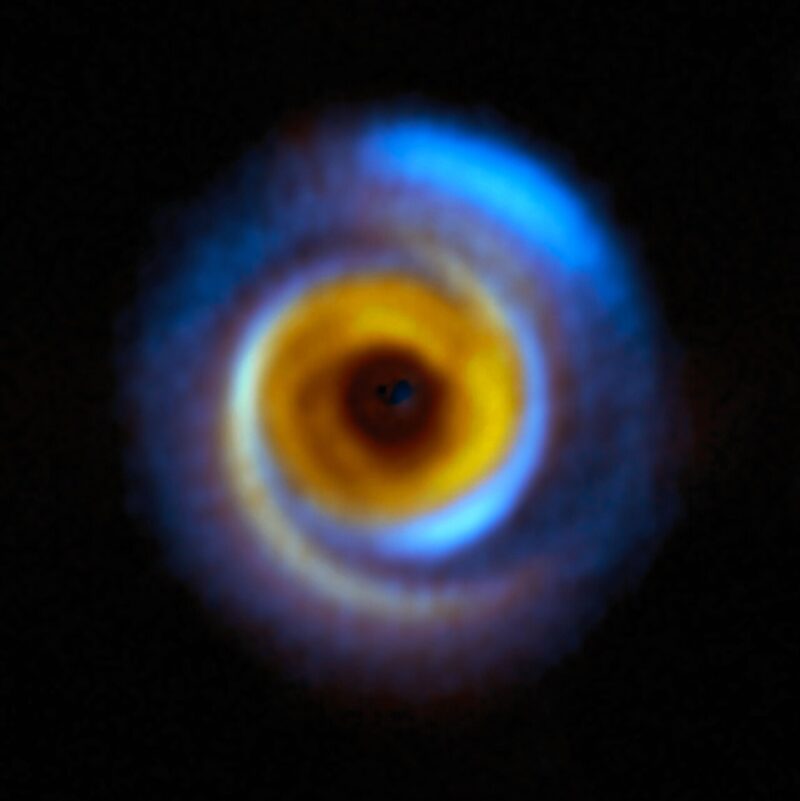
Bottom line: A new survey looked at 86 young stars and their planet-forming disks in three gas clouds in our own Milky Way. See them here.





